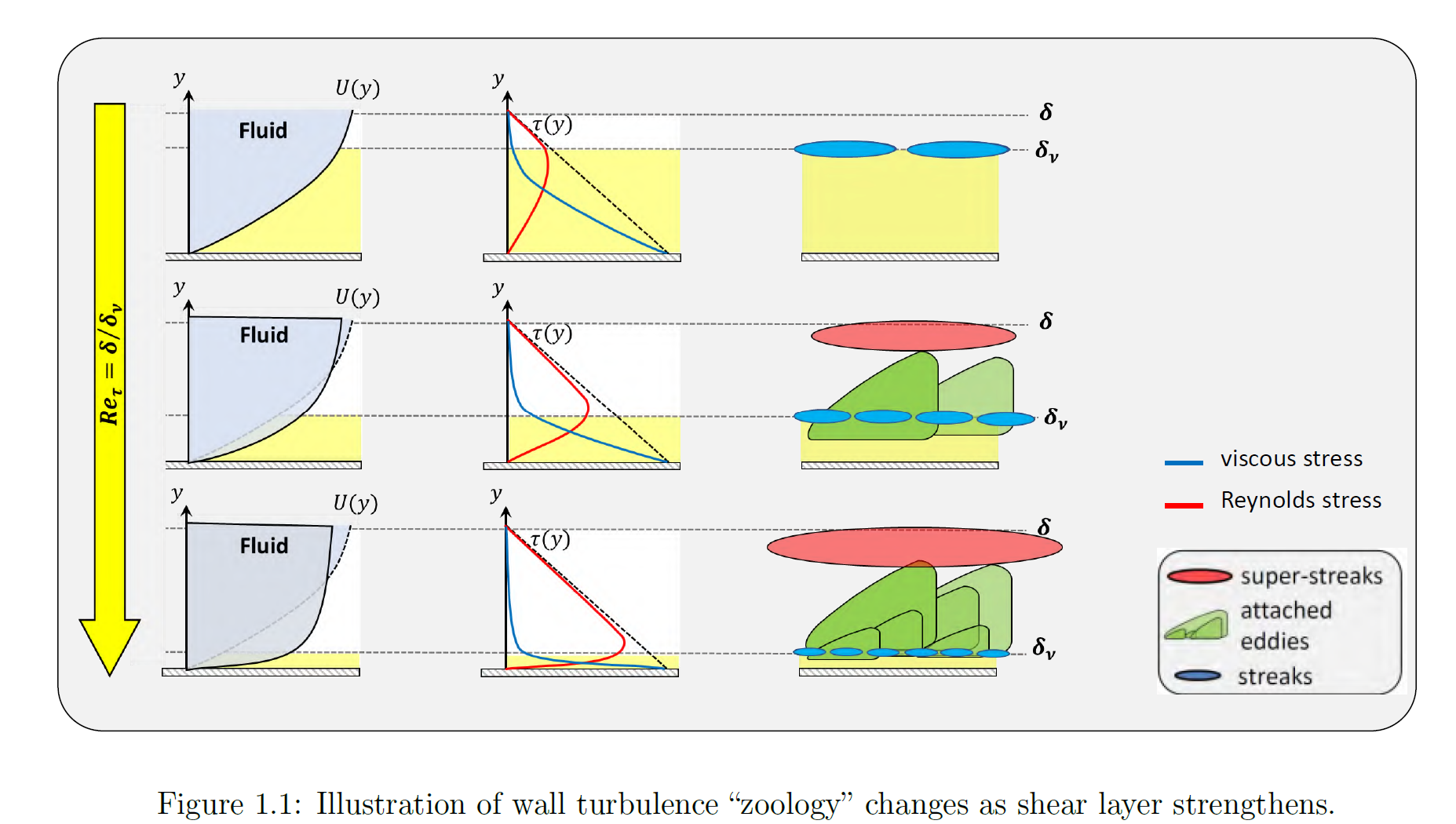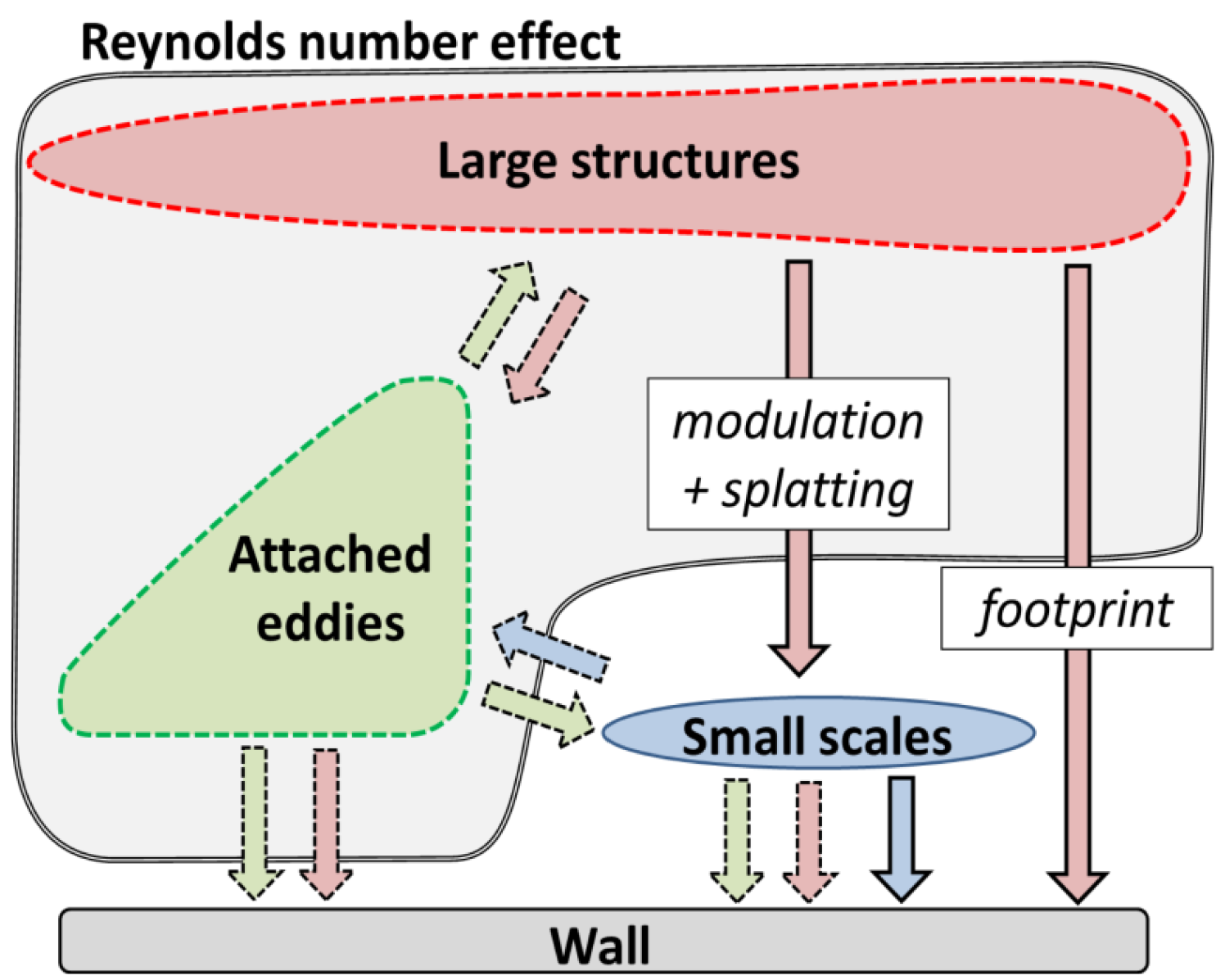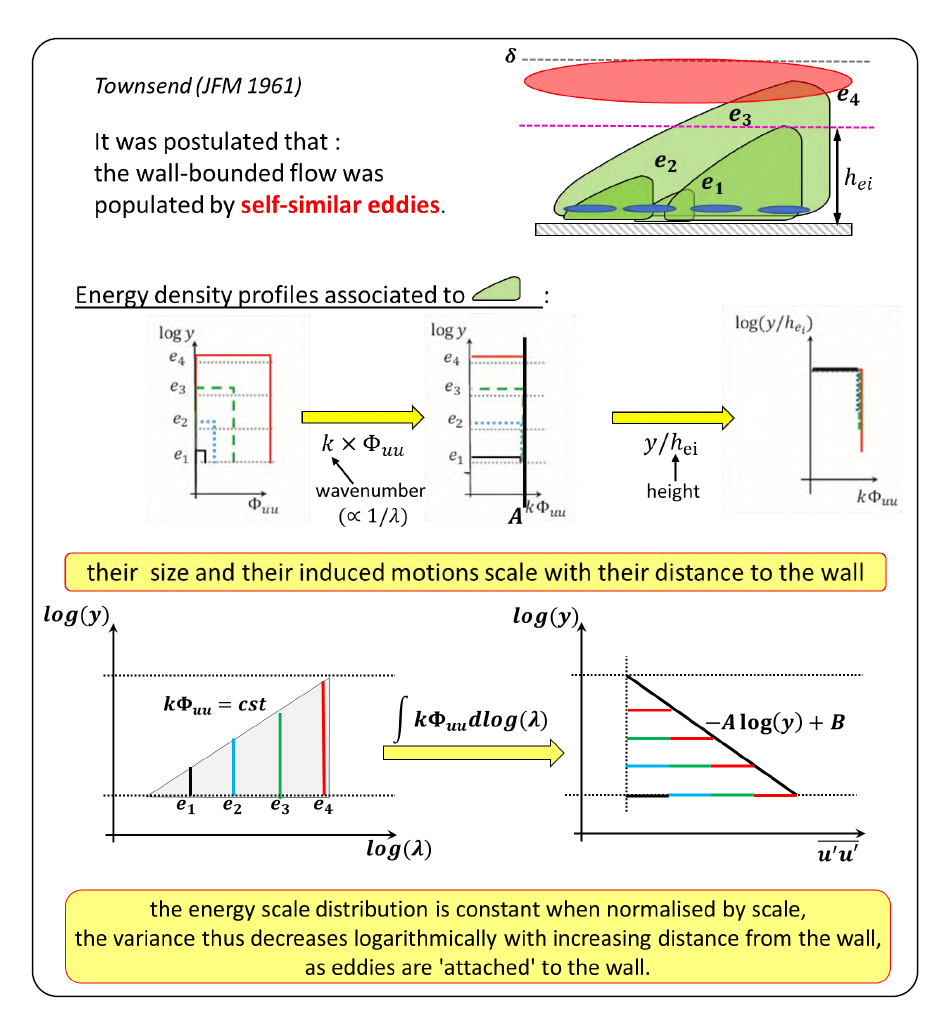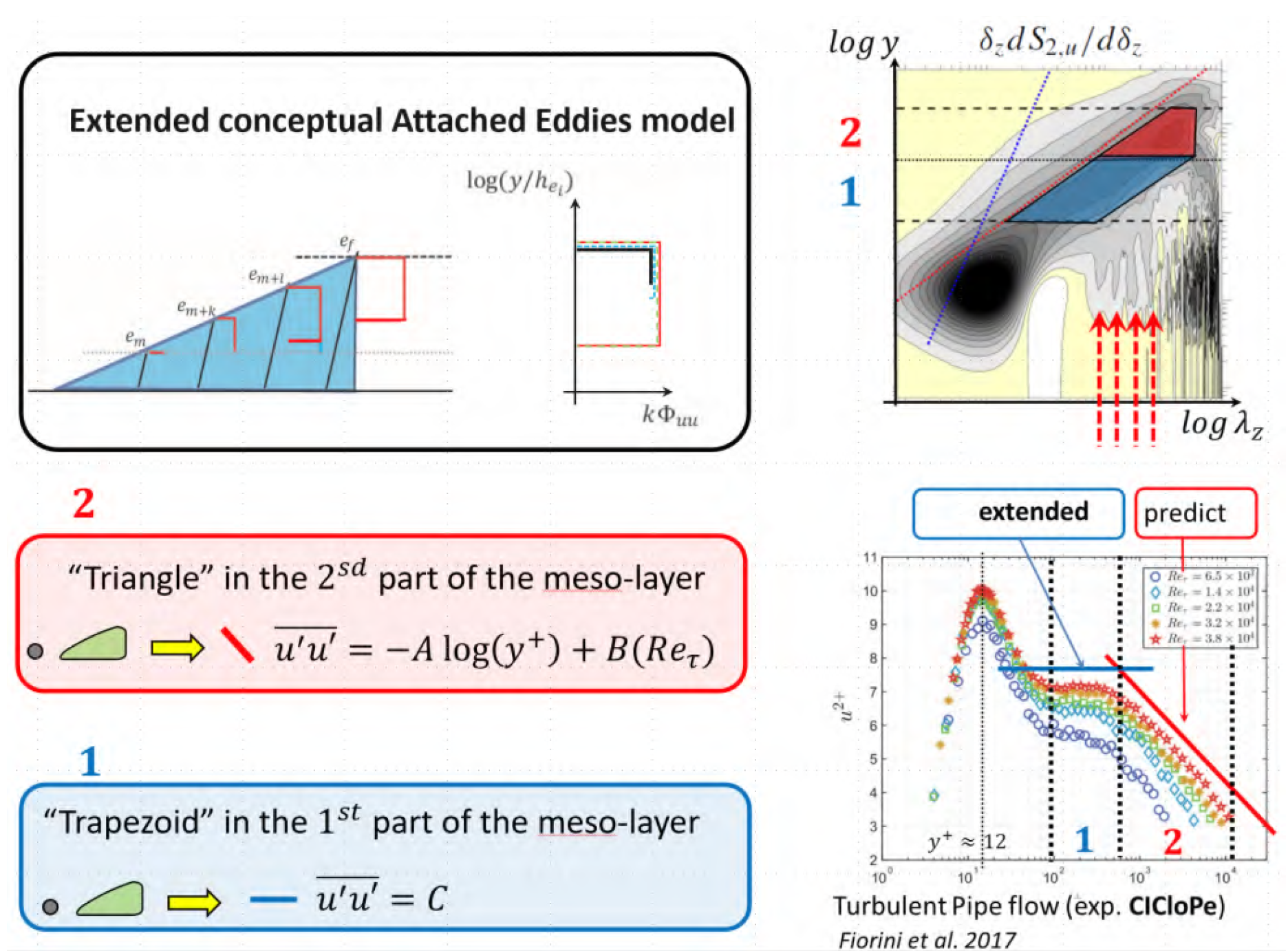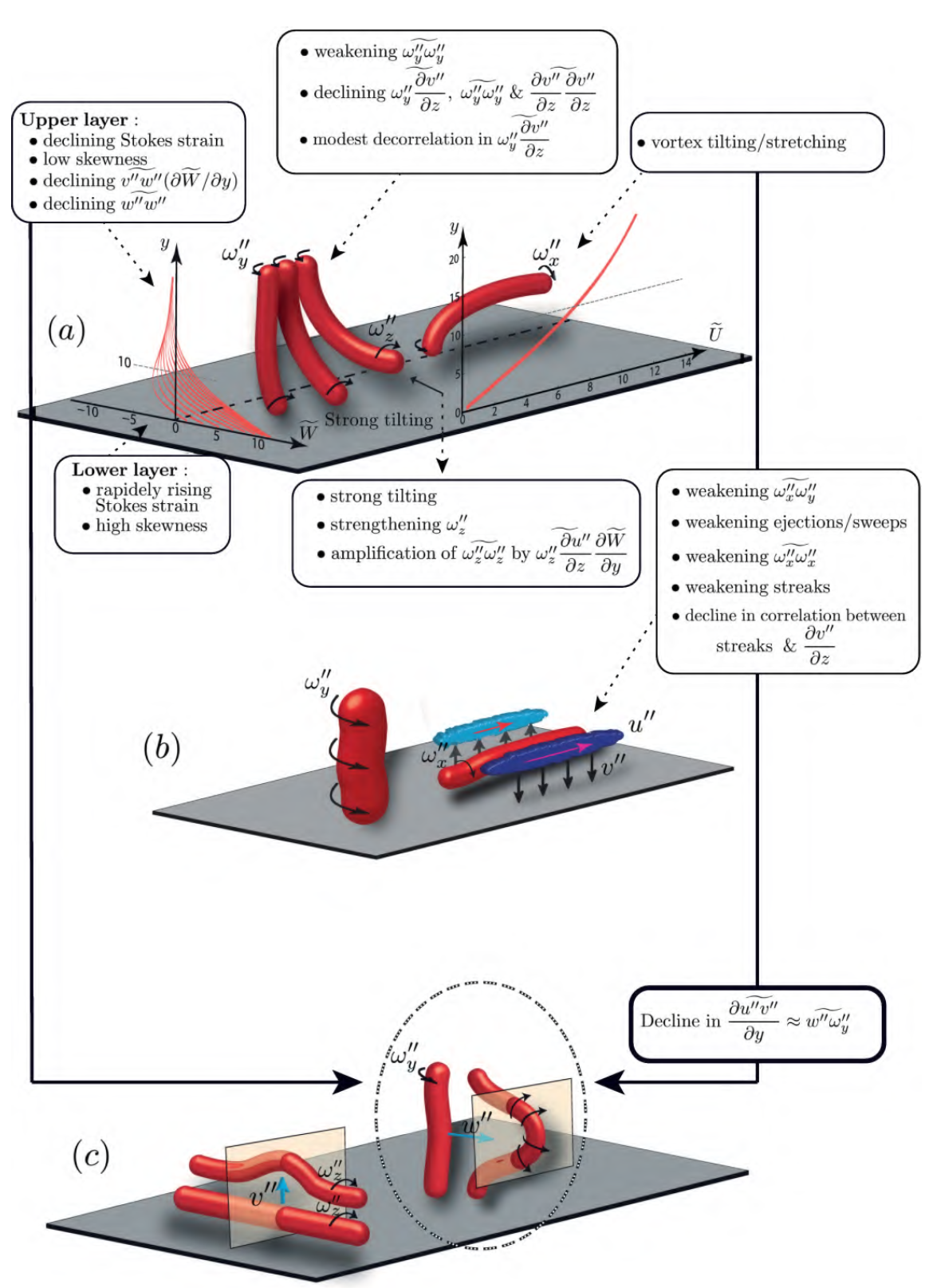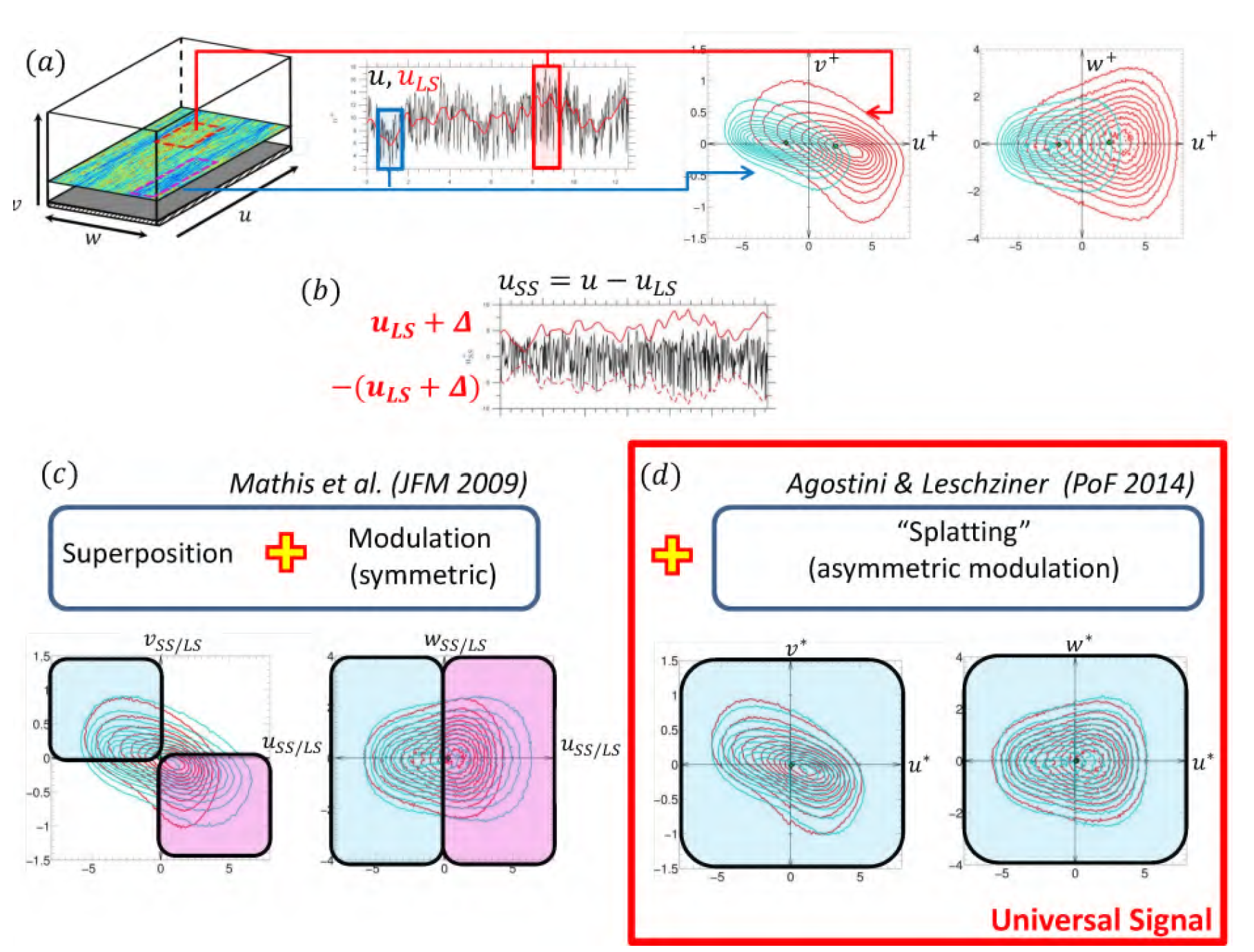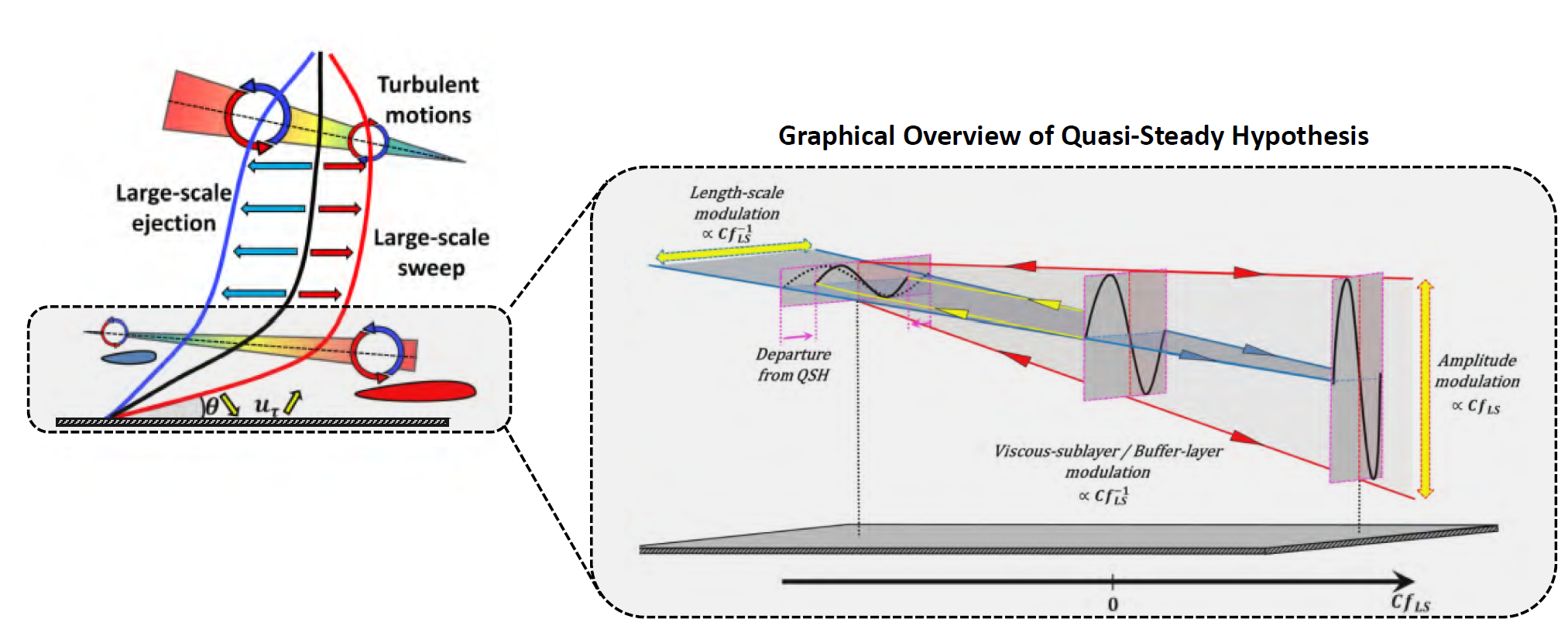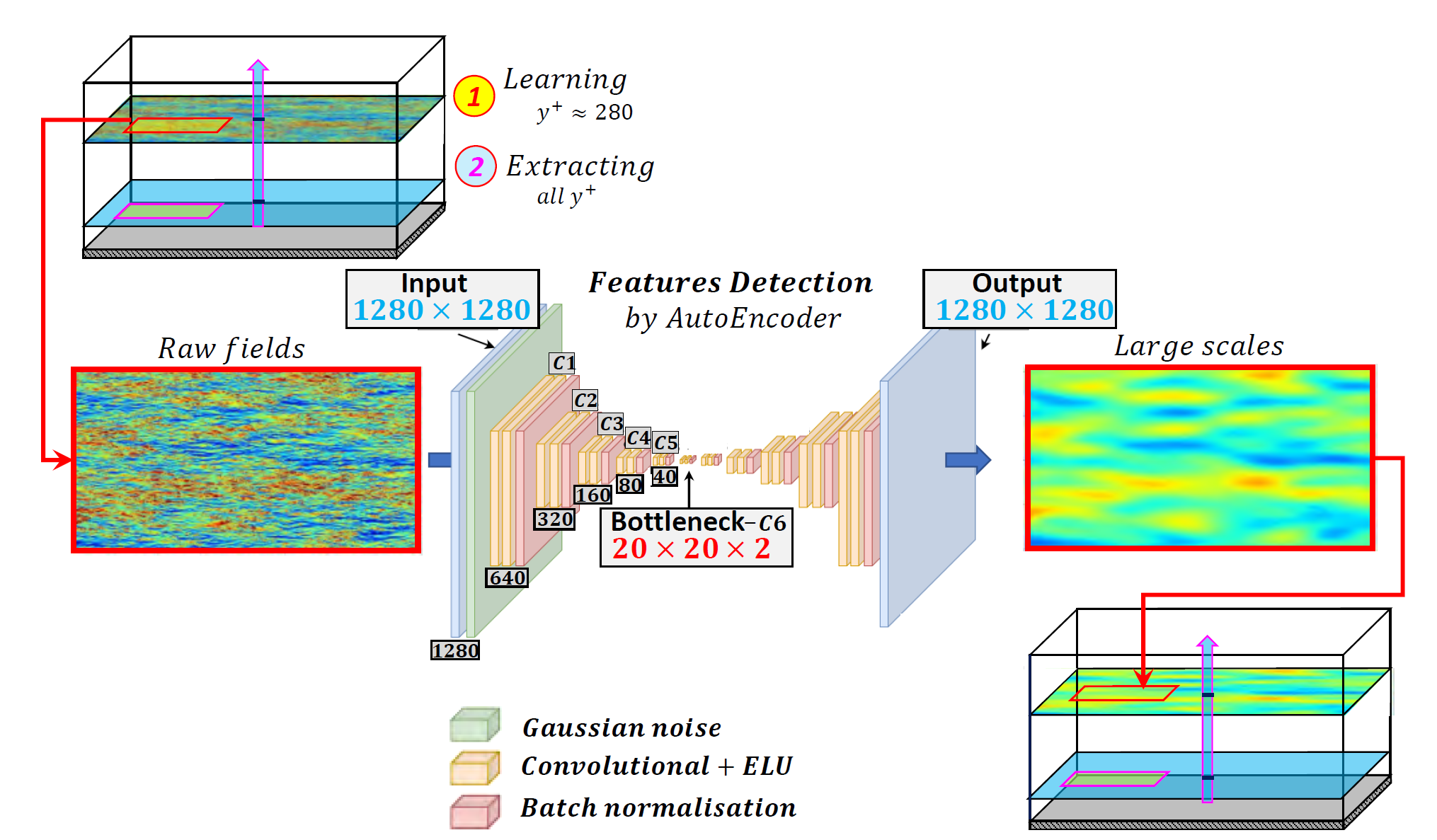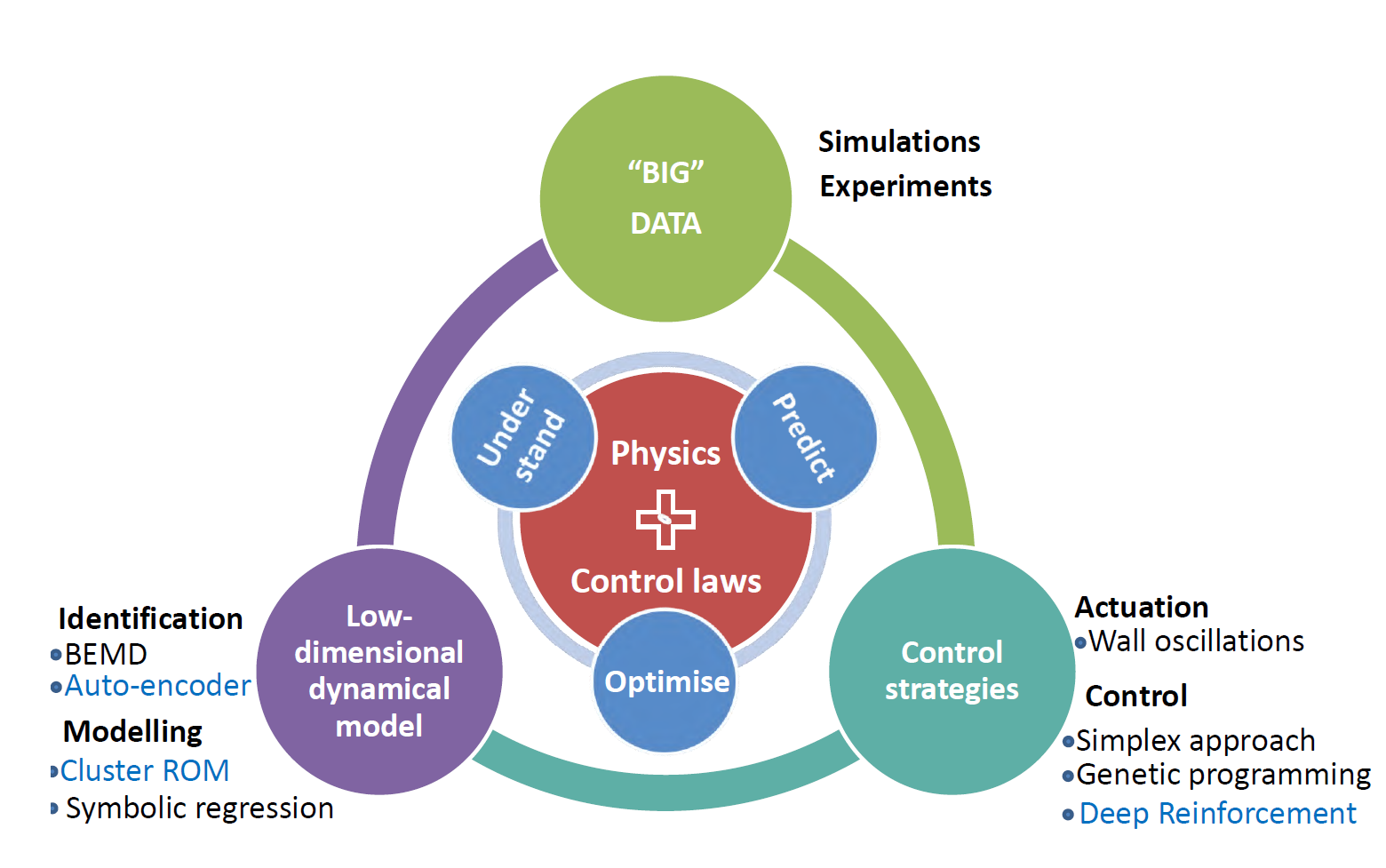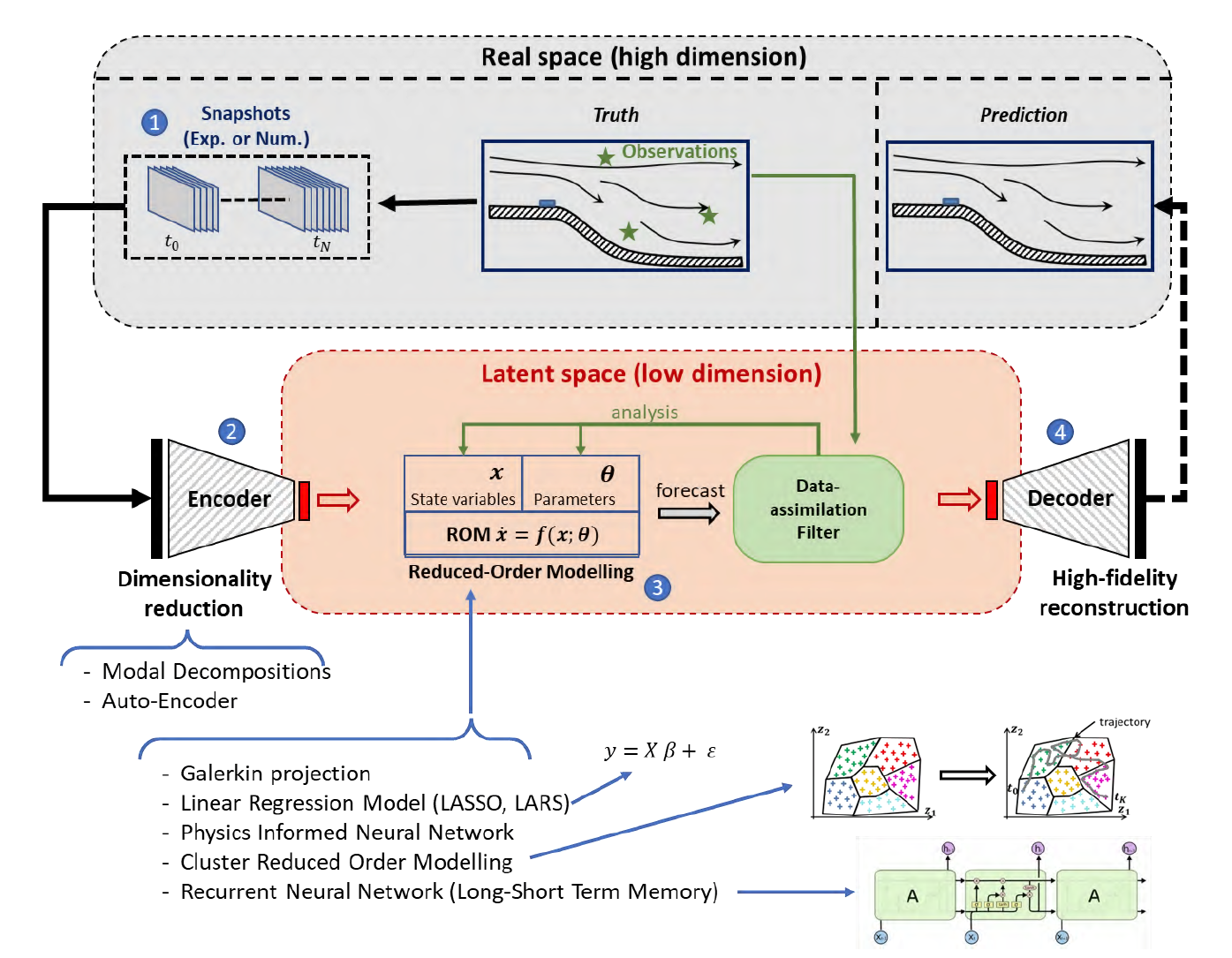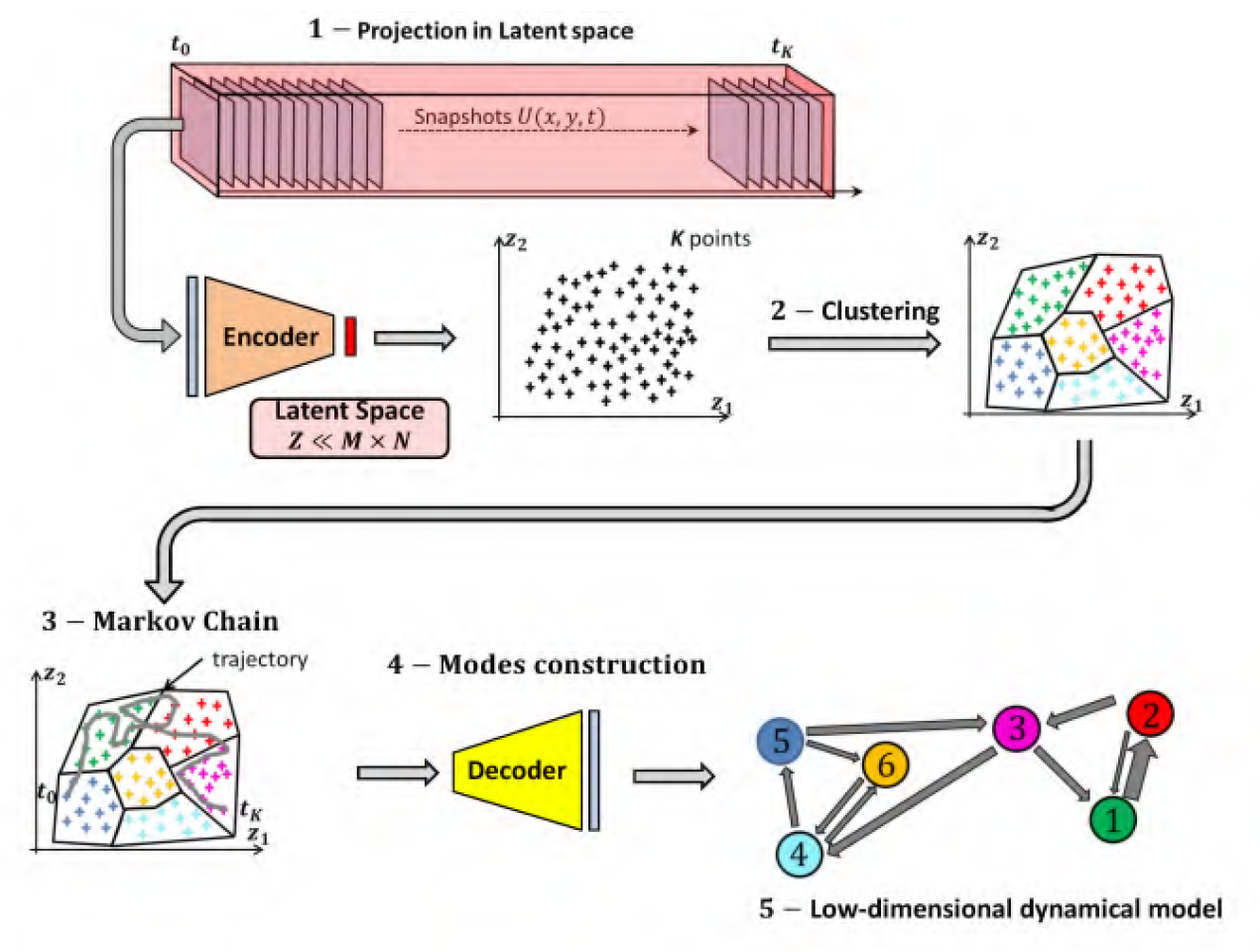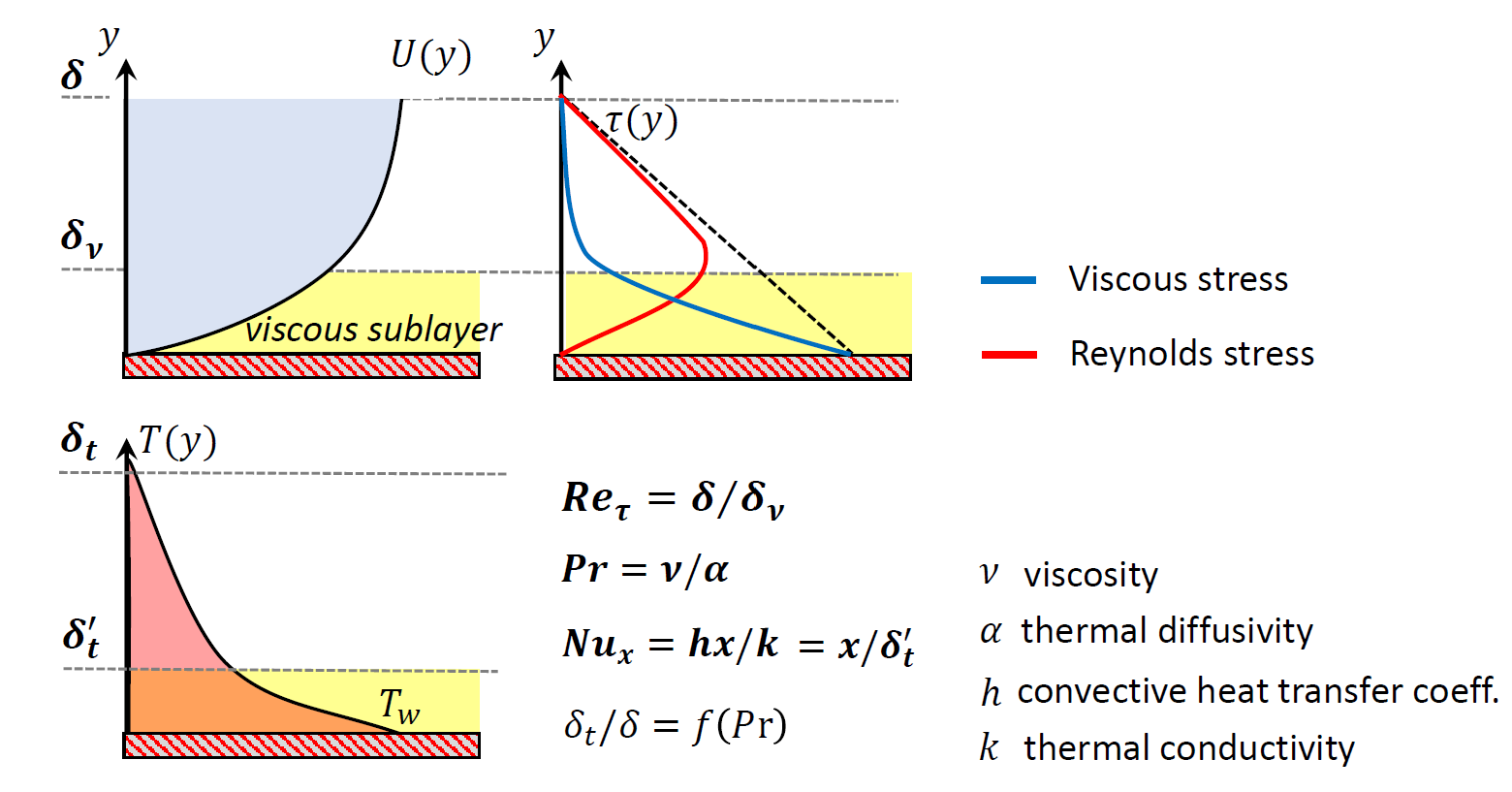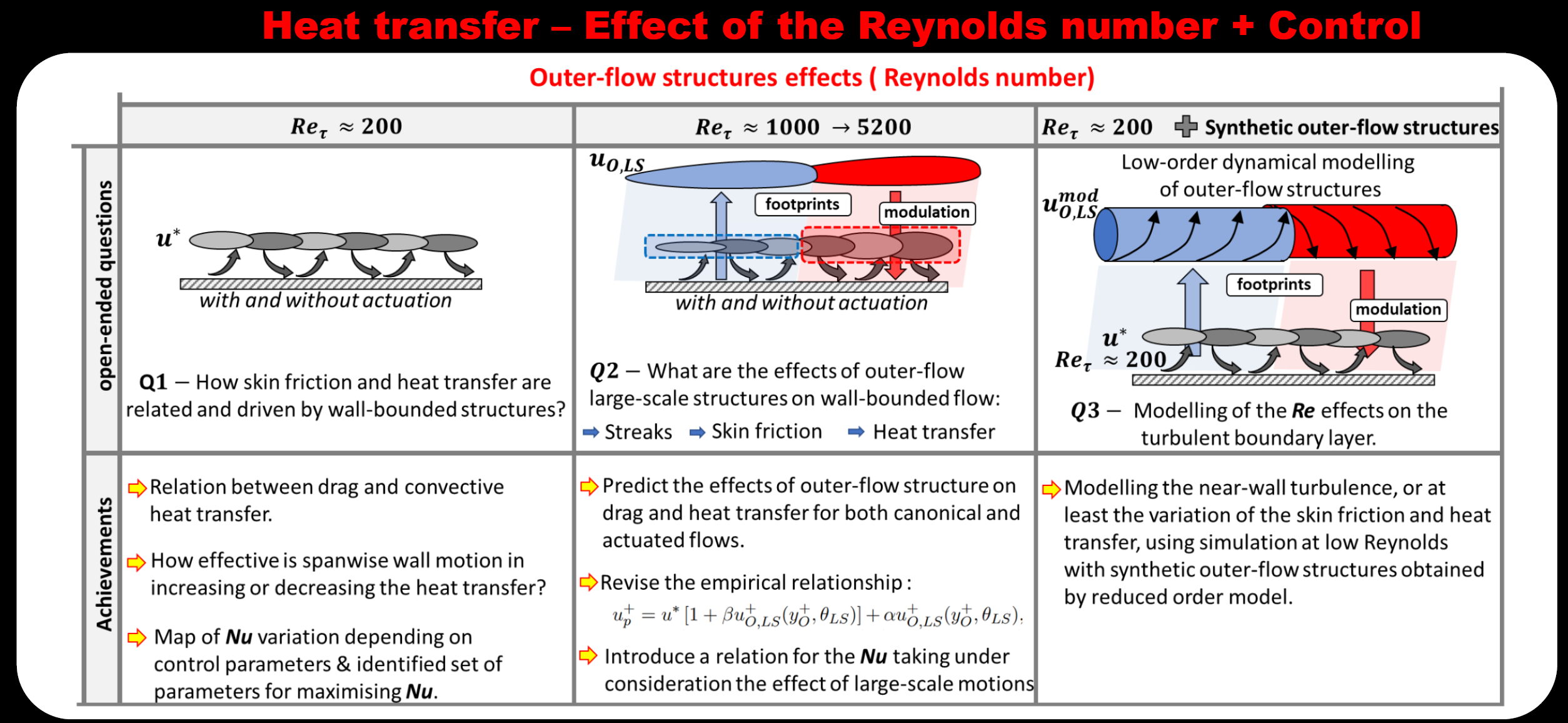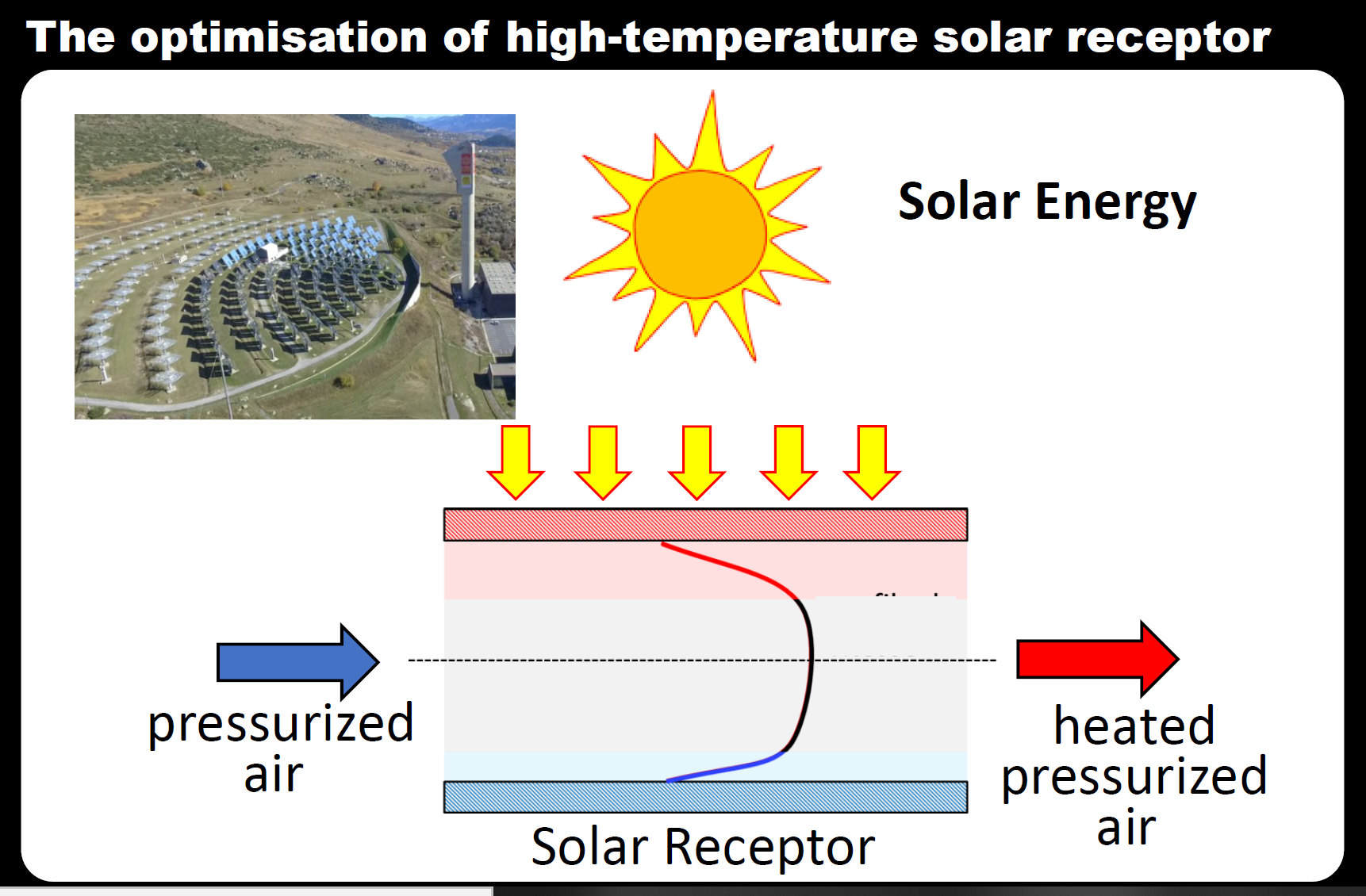1. Unveiling the Dynamics of Wall-Bounded Turbulence
Decoding the multi-scale structure and interactions.
The Multi-Scale Puzzle
Wall-bounded turbulence is characterised by a fascinating "zoology" of coherent structures spanning a vast range of scales. Near the wall, viscous effects dominate, leading to the formation of elongated "streaks." As the Reynolds number increases, larger structures emerge, including energetic "super-streaks" and hierarchies of "attached eddies" in the logarithmic region. Understanding how these different scales interact – the "puzzle" of wall turbulence – is fundamental to predicting and controlling these flows.
My research has shown that as Reynolds number increases, the spectral space available between viscous scales (δν) and boundary layer thickness (δ) expands, allowing for new hierarchies of attached eddies to develop. Essentially, outer scales become progressively stronger and their influence on near-wall regions (through "footprinting" and "modulation") becomes more pronounced. This complex interplay between scales directly impacts both drag and heat transfer properties.
The Attached Eddy Hypothesis (AEH)
The AEH provides a conceptual framework for understanding the structure of the logarithmic layer, proposing a hierarchy of self-similar eddies whose size scales with distance from the wall. While foundational, the classical AEH struggles to explain certain observed phenomena, like the energy plateau in the lower log-layer (meso-layer). My research critically examines the AEH using detailed DNS data and structure-function analysis. This has led to proposed refinements, suggesting modifications to the energy distribution within eddies to better reconcile the AEH with experimental and numerical observations across the entire meso-layer.
I've developed an extended conceptual model of attached eddies that explains both the logarithmic decay region of turbulent energy profiles and the plateau region observed in experimental data. This model, validated against high Reynolds number measurements from the CICLoPE facility, provides valuable insights into the full spectrum of turbulent structures present in wall-bounded flows.
Turbulence "zoology" and conceptual puzzle visualization showing how different structures (streaks, attached eddies, super-streaks) populate the boundary layer at increasing Reynolds numbers.
Classical and revised Attached Eddy Hypothesis models, showing how my expanded model explains both logarithmic decay and plateau regions in energy profiles.
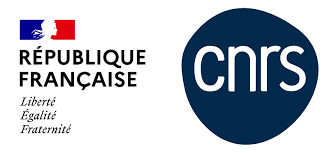 Dr. Lionel Agostini
Dr. Lionel Agostini
